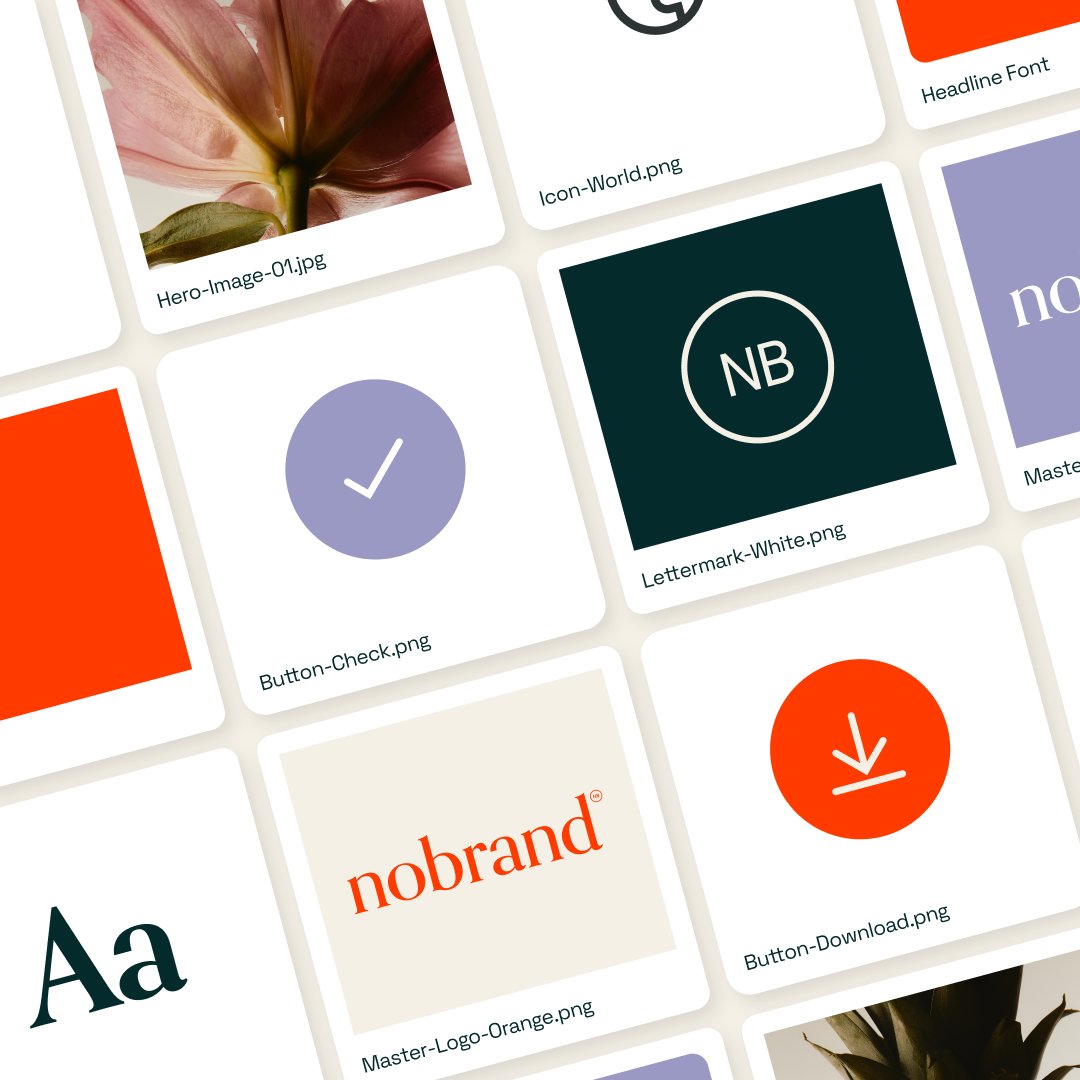For companies looking to scale up their branding activities, it can feel like the limiting factor is how much time their brand team has. But brand teams have learnt from other creative departments and use tools to carry out some of the more time-consuming tasks and automate branding activities.
What is brand automation?
Brand automation is where brand managers and creative teams use software, tools, and processes to carry out some of the repetitive brand-related tasks within a business.
For example, marketers and brand managers create a series of templates of commonly used materials. Then, automation tools use the company’s existing brand and marketing assets and automatically place them into the templates. This helps to streamline the process of creating consistent, on-brand materials at scale.

Why brand automation is required for modern brands
Presenting a consistent brand identity across all channels and customer touchpoints is essential for modern brands because it offers three crucial benefits:
- Builds trust: If your company uses consistent branding, customers are more likely to trust your business because it looks professional and high-quality.
- Increases brand recognition: Presenting a consistent visual identity helps consumers recognize your products and company.
- Boosts profitability: According to a recent report from Marq, consistent branding can boost your bottom line by more than 20%.
But as brands grow, it gets more challenging to manually achieve a high level of consistency across all departments and materials.
More employees use and create branded materials, and you may also need to manage multiple sub-brands or maintain a distinct identity across different regional markets. This complexity makes presenting a consistent identity more difficult — especially if your brand team needs to create or review all your brand assets manually before publication.
Automation helps maintain a consistent brand identity without your brand managers needing to manually review every single asset. This makes it easier to achieve brand consistency at scale, across all channels and markets.
3 benefits of brand automation
Brand automation offers real benefits for brand managers — and the wider business.
1. Increased efficiency
Brand automation helps businesses be more efficient with their time and resources. Brand and marketing teams can implement consistent branding across more assets and channels, more quickly than if they had to do everything manually.
Additionally, companies can be more resource-efficient. They won’t need to spend significant budget working with creative agencies to create all their brand assets. And they won’t need to hire more brand managers, designers, or other creative team members to implement brand elements across all their materials, as their existing teams (not just creative departments) can do more themselves, supported by automation.
2. Scalability of branding efforts
Automation allows more departments to create on-brand materials independently, without needing support from the design or brand teams. For example, sales reps can use templates to prepare on-brand slide decks for presentations or product demos.
And if the company acquires a new brand or launches new products that have their own sub-brand, automation makes it easier to manage multiple brands at scale, too. Brand managers can create templates and processes for core assets for multiple brands so that teams can easily modify and use consistent-looking materials for each sub-brand.
3. Enhanced creativity
Automation tools can carry out many small but time-consuming tasks, such as reviewing brand assets ahead of publication. This can save teams several hours of work each week, giving brand managers more time to focus on creative projects instead.
Core components of brand automation

Several tools and systems will help your company automate much of its repetitive brand-related work:
- Creative templates: Templates help non-designers create on-brand materials on their own, without input from brand managers. By creating templates for multiple use cases, you can automate the creative approvals process: Teams will know that if they use your templates, they’ll be able to create materials that follow your brand guidelines and are ready to publish.
- Brand guidelines: These document how your brand looks and feels, and should include your visual elements and guidelines, messaging, tone and other key branding components. Cloud-based brand guidelines (rather than a traditional PDF document) automate the process of sharing brand updates — if you change your guidelines, they’ll automatically sync for all users, so there’s no risk of teams using outdated brand elements.
- Digital Asset Management (DAM) system: A DAM makes it easy to manage and organize all your company’s brand files. Everything from logos to finished marketing collateral is centralized in one location, so everyone can access assets that are approved for publication.
- Brand portal: A brand portal is a centralized online platform where you store all the resources related to your brand, including your DAM system, brand guidelines, and creative templates. This setup allows you to automate the process of distributing new brand assets, as you simply add them to the portal and anyone can use them.
How to implement brand automation in your organization
Here are three practical steps to automate some of your company’s branding efforts:
1. Choose the right tools and platforms
A brand portal will connect all your brand elements, guidelines, and assets in a centrally located web interface. You can upload and organize all your brand elements into your brand portal and document correct usage in online brand guidelines. Then, you can build creative templates which use your brand assets, colors, and fonts — all in the same platform.
A brand portal also makes it easy to control user access and permissions. Instead of needing to manually grant access to individual files, your brand team can manage user permissions at scale within your brand platform.

2. Integrate automation into your existing workflows
Review the work your brand team is currently doing to identify opportunities to automate some of their more repetitive and time-consuming activities. This will help you integrate automation into their existing processes and workflows, which will deliver bigger benefits compared to creating brand new workflows to automate branding activities.
For example, if your brand team spends a significant amount of time reviewing creative assets from the marketing team, look for opportunities to automate those reviews. Creating brand templates for common assets — where team members can only change certain design elements — automates the review and approvals process, saving time for your brand and creative team members.
3. Educate team members to help them master brand automation
With proper training, non-creative team members become confident in creating the materials they require — without relying on your designers or brand teams to do everything for them manually.
Run training sessions to show how different teams can use the different tools and platforms to automatically create on-brand assets and materials. Resources like manuals and online tutorials will help everyone get the hang of creating their own brand materials without input from a brand manager. In the long term, this education and training will mean the whole organization feels the benefits of automated branding, as you can create new assets more efficiently and effectively.
Brand automation lets you scale up your branding activity

In a small company, it’s relatively easy to manage your brand and creative efforts manually because you have time to review everything your team publishes. But bigger companies create more assets and have more teams working on brand materials at any one time — which creates opportunities for inconsistent branding to creep in.
That’s why automation is essential. At a certain point it becomes impossible for your brand team to manually review all your brand assets. Give your team the right tools, templates, and processes to automate and replace many of those manual reviews, freeing them up to focus on higher-impact brand work without compromising on brand consistency.



